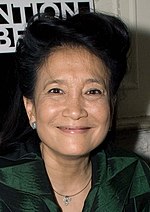
Jung Chang
Chinese-British author (born 1952)
Murasaki Shikibuwas a Japanese novelist, poet and lady-in-waiting at the Imperial court in the Heian period. She is best known as the author of The Tale of Genji, widely considered to be one of the world’s first novels, written in Japanese between about 1000 and 1012.
Table of Contents
Murasaki Shikibuwas a Japanese novelist, poet and lady-in-waiting at the Imperial court in the Heian period. She is best known as the author of The Tale of Genji, widely considered to be one of the world’s first novels, written in Japanese between about 1000 and 1012. Murasaki Shikibu is a descriptive name; her personal name is unknown, but she may have been Fujiwara no Kaoruko (Teng Yuan Xiang Zi ), who was mentioned in a 1007 court diary as an imperial lady-in-waiting.
Heian women were traditionally excluded from learning Chinese, the written language of government, but Murasaki, raised in her erudite father’s household, showed a precocious aptitude for the Chinese classics and managed to acquire fluency. She married in her mid-to-late twenties and gave birth to a daughter, Daini no Sanmi. Her husband died after two years of marriage. It is uncertain when she began to write The Tale of Genji, but it was probably while she was married or shortly after she was widowed. In about 1005, she was invited to serve as a lady-in-waiting to Empress Shoshi at the Imperial court by Fujiwara no Michinaga, probably because of her reputation as a writer. She continued to write during her service, adding scenes from court life to her work. After five or six years, she left court and retired with Shoshi to the Lake Biwa region. Scholars differ on the year of her death; although most agree on 1014, others have suggested she was alive in 1025.
Murasaki wrote The Diary of Lady Murasaki, a volume of poetry, as well as The Tale of Genji. Within a decade of its completion, Genji was distributed throughout the provinces; within a century it was recognized as a classic of Japanese literature and had become a subject of scholarly criticism. Between 1925 and 1933, The Tale of Genji was published in English. Scholars continue to recognize the importance of her work, which reflects Heian court society at its peak. Since the 13th century her works have been illustrated by Japanese artists and well-known ukiyo-e woodblock masters.